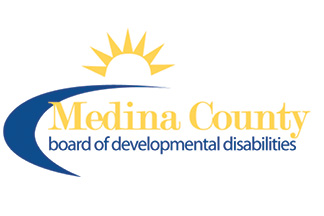What Do You Know About Autism?
Sponsored by Medina County Board of Developmental Disabilities
April is National Autism Acceptance month, a time when we recognize autism as the fastest growing developmental disability in the United States and encourage everyone to learn more about people living with autism. In recent years, people with autism have been calling on their families, friends and neighbors to shift their language to match the growing need for acceptance. This shift in language from “awareness” – which may indicate a problem to be solved – to “acceptance” is meant to highlight that people with autism should have a place in the community just as they are without trying to change them.
What Do You Know About Autism?
It is more common than you might suspect. The Centers for Disease Control estimates one in every 44 children in the United States is diagnosed with autism. There are many types of autism and the timing and severity of its first symptoms can vary. Some children with autism show hints within the first few months of life and may be diagnosed as early as 18 months. Other children may appear to develop normally until around 18 to 24 months of age and then stop gaining new skills and/or start losing skills. In general, autism’s most obvious signs tend to appear between 2 and 3 years of age. Autism is about four times more common among boys than girls, and while most attention is focused on children, thousands of adults are diagnosed with autism each year.
Doctors are getting better at recognizing the signs of autism. There is no medical test for autism. Diagnoses are based on observations of behavior and cognitive development. The American Academy of Pediatrics recommends that children be screened for autism beginning at their 18-month well-child checkup. Possible signs of autism in babies and toddlers include: no social smiles, limited to no eye contact, no babbling or use of gestures to communicate (e.g. pointing, reaching, waving etc.), no response to name when called, repeats words or phrases over and over, gets upset by minor changes in routine or surroundings, performs repetitive behaviors such as flapping, rocking or spinning and has unusual, and often, intense reactions to sounds, smells, tastes, textures, lights and/or colors.
It cannot be cured. Autism is not a disease that can be cured, but it is a disorder that can be treated. One of the most important things parents can do is become familiar with the typical developmental milestones their child should be reaching. If a parent becomes concerned about any delays or suspected autism symptoms in their child, the first step is to alert their health care provider. The sooner intervention services begin, the more likely a child with autism is able to reach their full potential. Parents may have concerns about labeling a child but need to seek help without delay.
Not all forms of autism are equal. Autism Spectrum Disorders (ASD) encompass a wide range of conditions, from high-functioning individuals to people who require more one-to-one care, with many levels in between. Each person with autism is a unique individual with different needs and interests and has a distinct set of strengths and challenges. The ways in which people with autism learn, think and problem-solve can vary greatly.
If you are looking for more information or have questions about autism and autism related resources, the Medina County Board of Developmental Disabilities provides early intervention services and specific programs and learning environments for people diagnosed with autism. For more information, visit the Medina County Board of DD website at www.mcbdd.org or call 330-725-7751.
Opinions and claims expressed above are those of the author and do not necessarily reflect those of ScripType Publishing.

